-
 +21 +1
+21 +1Watch: 'Bug fight club' clarifies evolution of natural weapons
Scientists decked out bugs with body armor and watched them face off in wrestling matches. The experiments highlight the evolution of natural weapons.
-
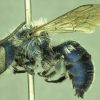 +12 +1
+12 +1Blue Bee Feared to Be Extinct Is Found in Florida
First discovered in 2011, the rare species reappeared recently after nearly a decade of eluding scientists' watch
-
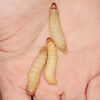 +3 +1
+3 +1This Bug Can Eat Plastic. But Can It Clean Up Our Mess?
Scientists have discovered that wax worms can eat plastic bags. Could that help us reduce plastic pollution?
-
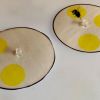 +42 +1
+42 +1Bees can count with just four nerve cells in their brains
Bees can solve seemingly clever counting tasks with very small numbers of nerve cells in their brains, according to researchers at Queen Mary University of London.
-
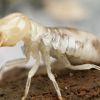 +2 +1
+2 +1It’s official: Termites are just cockroaches with a fancy social life
Termites are the new cockroach. Literally. The Entomological Society of America is updating its master list of insect names to reflect decades of genetic and other evidence that termites belong in the cockroach order, called Blattodea.
-
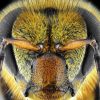 +21 +1
+21 +1Bees are first insects shown to understand the concept of zero
Bees seem to understand the idea of zero – the first invertebrate shown to do so. When the insects were encouraged to fly towards a platform carrying fewer shapes than another one, they apparently recognised “no shapes” as a smaller value than “some shapes”.
-
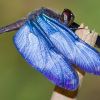 +23 +1
+23 +1The blue wings of this dragonfly may be surprisingly alive
An adult insect wing is basically dead. So what in the world were tiny respiratory channels doing in a wing membrane of a morpho dragonfly? Rhainer Guillermo Ferreira was so jolted by a scanning electron microscope image showing what looked like skinny, branching tracheal tubes in a morpho wing that he called in another entomologist for a second opinion. Guillermo Ferreira, then at Kiel University in Germany, showed the image to a colleague who also was “shocked,” he remembers. A third entomologist was called in. Shock all around.
-
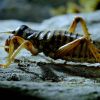 +27 +1
+27 +1Insect Returns From The Dead - Wild New Zealand
The Mountain Stone Weta, boasts perhaps the most extraordinary survival technique of all - the ability to come back from the dead. With the aid of a specialized filming chamber we are able to witness stunning footage of life slowly returning to this frozen insect.
-
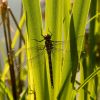 +23 +1
+23 +1Female dragonflies fake sudden death to avoid male advances
Female dragonflies use an extreme tactic to get rid of unwanted suitors: they drop out the sky and then pretend to be dead. Rassim Khelifa from the University of Zurich, Switzerland, witnessed the behaviour for the first time in the moorland hawker dragonfly (Aeshna juncea). While collecting their larvae in the Swiss Alps, he watched a female crash-dive to the ground while being pursued by a male. The female then lay motionless on her back. Her suitor soon flew away, and the female took off once the coast was clear.
-
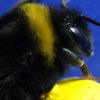 +20 +1
+20 +1Bumblebees Demonstrate the Power of Insect Brains
Scientists trained bumblebees to move a ball to the center of a platform to gain a sugary treat.
-
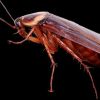 +3 +1
+3 +1Doctors remove live cockroach from a woman’s skull in Chennai
The doctors are glad that Selvi turned up at the right time because if the cockroach would have died, it might have harmed her brain.
-
 +35 +1
+35 +1The Futuristic Utensils Designed to Help You Eat Bugs
Great Christmas gift!
-
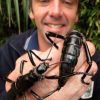 +39 +1
+39 +1Dryococelus australis was thought to be extinct since the 1920s but was recently rediscovered on a volcanic island in the South Pacific
On Lord Howe Island there used to be an insect so big that the Europeans named it the "tree lobster".
-
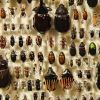 +2 +1
+2 +1Not Just Bees, All Insects are in Decline and Heading for Extinction
Researchers are feverishly working to understand the global die off of the world’s bee species, and have linked colony collapse disorder to the use of neonicotinoid pesticides along with other common agrichemicals. As it turns out, the impact of modern industrial agriculture and widespread chemical contamination of our environment is not just affecting bees, but also contributing to the loss of all insects, and some scientists believe we are moving in the direction of mass extinction.
-
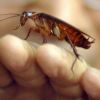 +26 +1
+26 +1Cockroach milk: The drink you didn't know you've been missing
A little cockroach milk with those cookies? Chock full of protein, the insect milk may someday be transformed into a food supplement worthy of human consumption, new research indicates. Scientists have found that the Pacific Beetle Cockroach feeds its bug babies a formula which is remarkably rich in protein, fat and sugar. Don't expect to find it next to the regular milk in the dairy section, however, at least not for now. "Any liquid harvested from a cockroach is not true milk.
-
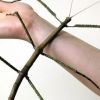 +35 +1
+35 +124-inch stick insect clinches record for world’s longest 'bug'
While to some the idea of a two-foot long bug may be the perfect fuel for a total freak-out, no one can deny that the latest superlative insect discovered in China is nothing less than majestic! It is a remarkable stick insect measuring in at 62.4 centimeters – a 24.6-inch bug that looks like a twig, if not a branch. Nature never ever fails to impress. Alerted by locals of the mighty many-legged creature, scientist Zhao Li had been on the hunt for the bug for six years before he finally found one, reports the official state China Xinhua News.
-
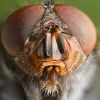 +11 +1
+11 +1Insects Are Conscious and Egocentric
Insects are conscious, egocentric beings, according to a new paper that also helps to explain why and likely when consciousness first evolved. Recent neuroimaging suggests insects are fully hardwired for both consciousness and egocentric behavior, providing strong evidence that organisms from flies to fleas exhibit both. Consciousness comes in many levels, and researchers say that insects have the capacity for at least one basic form: subjective experience.
-
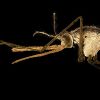 +38 +1
+38 +1How do Mosquitoes Hunt You?
Ever wondered what's going on when you feel that stinging bite of a mosquito?
-
 +37 +1
+37 +1Hundreds of tiny bugs are probably living in your home
No matter how well you think you know your home, it holds a number of dark corners and hidden spaces that you don't look at too closely from day to day. And more likely than not, these nooks and crannies host a vast range of tiny squatters that have somehow found their way in from outdoors, and in greater numbers than you might expect, according to a new study. But don't panic. They really don't want to bug you.
-
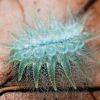 +53 +2
+53 +2Meet the Caterpillar that Could Pass for a Christmas Ornament
This spun glass moth caterpillar is strange but beautiful.
Submit a link
Start a discussion




















